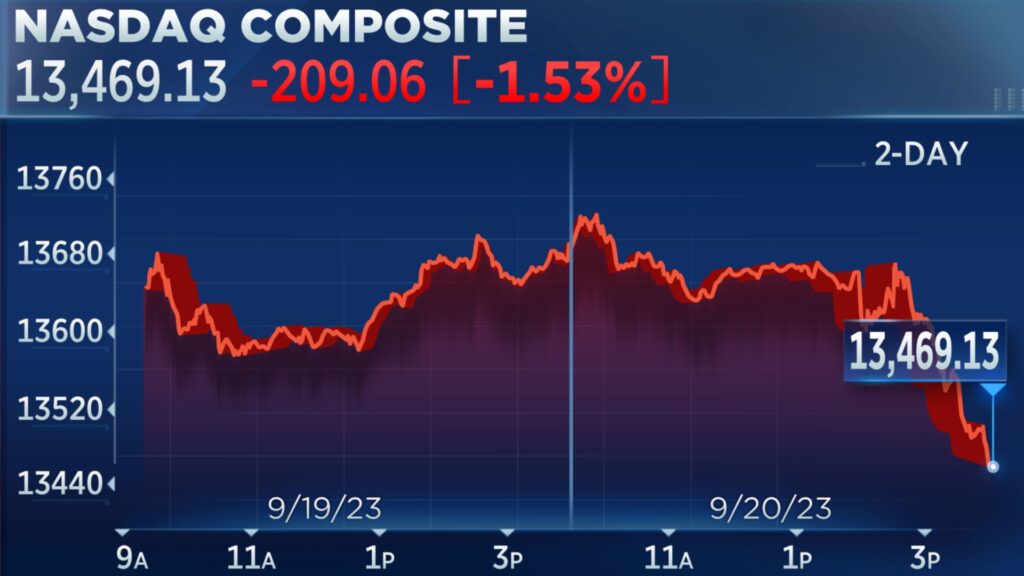Traders work on the floor of the New York Stock Exchange during morning trading on August 10, 2023 in New York City.
Michael M. Santiago | Getty Images
Stocks retreated on Wednesday after the Federal Reserve said it would leave interest rates unchanged but indicated another hike on the horizon.
The S&P 500 dropped 0.94% to 4,402.20. The Nasdaq Composite slid 1.53% to 13,469.13, weighed on by a drop of more than 2% in Microsoft and roughly 3% declines in Nvidia and Google-parent Alphabet. The Dow Jones Industrial Average lost 76.85 points, or 0.22%, to 34,440.88.
The three major indexes closed at session lows.
The S&P 500 intraday
The Fed held rates steady, as was widely anticipated. But the central bank indicated that one more rate hike is expected before the end of the year in its economic projections. The central bank signaled it would end its hiking campaign after that increase and begin cutting rates next year — though keeping rates at a higher level for the year than signaled in June.
The markets gyrated as traders listened to Fed Chair Powell give his outlook for rates. Powell said that the central bank would “proceed carefully” in raising rates further but the Fed chief also noted there is more work to do in the fight against inflation.
Powell also commented that a soft landing for the economy was still possible and his primary objective, but not his baseline scenario. The three major indexes slid while Powell spoke and continued to tumble in the final half-hour of trading.
“The US economy is too strong and this rate hiking cycle will last a lot longer than Wall Street wants,” said Edward Moya, senior market analyst at Oanda.
Tech stocks dragged in the session, with information technology and communication services the two worst-performing sectors in the S&P 500. Investors had been buying up tech shares and other growth stocks this year on the hope that Fed would already be done tightening policy at this point.
The U.S. 2-year Treasury yield jumped to its highest level since July 2006, while the 10-year Treasury yield reached a high not seen since November 2007. Those moves raised concerns about the impact of higher rates and likely put pressure on tech stocks.
Read the full article here



